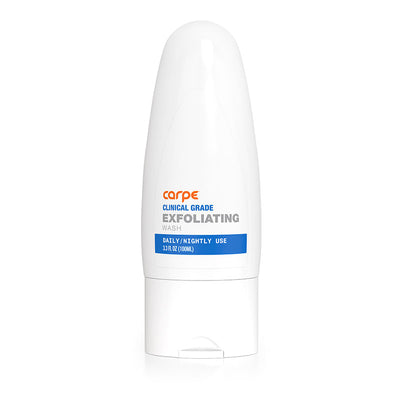Raynaud's: What is it? Do you have it?
Cold, clammy hands and feet are often caused by a condition called Raynaud’s.
According to an article in Harvard Women’s Health Watch, Raynaud’s causes the body to have an exaggerated response to cold temperatures.
For people with Raynaud’s, when the body is exposed to even slightly colder conditions, the blood vessels in the skin begin to contract and shunt blood flow to vital organs, leaving the skin with a pale color and feeling cold and clammy.
It sounds extreme, but this is a very common ailment, and it is not usually indicative of a larger health problem.[1]
Hyperhidrosis
A subset of people who experience cold hands and feet also suffer from wet hands and feet.
Clammy is defined as “being damp, soft, sticky, and usually cool” and “lacking normal human warmth” in the Merriam Webster dictionary.[3]
For those that suffer from clammy extremities hyperhidrosis, aka excessive sweat, may be the culprit.
It is also possible that some people are living with both Raynaud's and hyperhidrosis, as, according to the National Heart, Lung, and Blood Institute:
- 5% of the population has Raynaud's
- 2.8% of the population has hyperhidrosis.[2][4]
- There is overlap
Hyperhidrosis is a condition in which people sweat in excess of what is needed for thermoregulation.
Thermoregulation is the body’s way of regulating its own internal temperature, even when exposed to cold or hot external environments.[5]
So, people with hyperhidrosis will sweat in any environment, whether it is beneficial or not.
When people with hyperhidrosis sweat in a cold environment, it creates a perfect situation for clammy hands and feet to develop.
Many people who deal with symptoms like have clammy hands and feet are actually suffering from a type of hyperhidrosis called primary focal hyperhidrosis.[6]
This type of hyperhidrosis usually begins during adolescents and it can cause people to sweat profusely from specific body parts, including the hands and feet.[5]
This is why a person may have clammy hands or feet but the rest of their body is not effected the same way.
There are certain clues a person can check for if they want to tell if they have hyperhidrosis, like excessive sweating in certain areas and sweating that is not in response to any known environmental or physiological triggers.
Cold Temperatures
For people who don’t suffer from hyperhidrosis, sweating is a normal physiological process that occurs in order to maintain homeostasis.
There is a good reason why humans sweat: healthy sweating occurs in response to hot temperatures, as a mechanism to keep the body cool.
When a person has hyperhidrosis, they sweat constantly, for an unknown reason.
They have a constant source of sweat cooling their hands or feet down, which can create some very uncomfortable situations.
Another reason that people with hyperhidrosis often sweat from the hands and feet is because there are a high concentration of eccrine (sweat) glands on the palms of the hands and soles of the feet.
The good news is that primary focal hyperhidrosis is not a dangerous condition, although at times it can be distressing.[5]
Manage and Treat Clammy Hands and Feet
There are a few ways that a person can prevent and treat clammy hands and feet.
These treatments stop hand and foot sweat and its odor which in turn prevents clammy hands and feet from occurring.
- Over-the-counter topical treatments for hyperhidrosis
- Iontophoresis for palmar and plantar hyperhidrosis
- Oral medications for hyperhidrosis
- Botox treatments for palmar and plantar hyperhidrosis
- Surgical treatments for primary focal hyperhidrosis
Typically, antiperspirants are a good first choice for someone who is just starting treatment for hyperhidrosis.
Each treatment has benefits and drawbacks, and a dermatologist can help an individual with hyperhidrosis figure out which treatment options work for them.[4]
Lifestyle Treatments
- Wear ventilating shoes
- Absorbent, breathable socks
- Antiperspirant wipes
- Handkerchief, or other absorbent cloth
There is a clear correlation between stress triggers and the sweating that is experienced by those with primary focal hyperhidrosis.[5] Some people may find that practicing anxiety reduction methods that can reduce sweating can be beneficial in limiting the amount of sweat they produce.[7]
Other Reasons for Clammy Hands and Feet
While hyperhidrosis and Raynaud's are common reasons that people may have clammy hands and feet, they are not the only possible causes.
Sometimes clammy skin is an indicator of another potential health condition or issue. Speak to a doctor to help diagnose these:
- Hot flashes
- Fever.
- An overactive thyroid
- Heart Attack
If you experience chest pain, shortness of breath, pain in the back or arm, nausea, and lightheadedness along with suddenly clammy skin then you need to seek medical attention.
However, it is important to remember that in the vast majority of cases clammy hands and feet are not indicative of a dangerous condition.[8]
Sources
- Cold fingers, cold toes? Could be Raynaud's. (2009). Harvard Women's Health Watch. Retrieved September 18, 2018, from https://www.health.harvard.edu/diseases-and-conditions/cold-fingers-cold-toes-could-be-raynauds
- Raynaud's. (n.d.). National Heart, Lung, and Blood Institute. Retrieved September 18, 2018, from https://www.nhlbi.nih.gov/health-topics/raynauds
- Definition of Clammy. (2018). Retrieved September 18, 2018, from https://www.merriam-webster.com/dictionary/clammy
- Pariser, D. M. (2014). Hyperhidrosis (4th ed., Vol. 32). Philadelphia, PA: Elsevier.
- Huddle, J. R. (2014). Hyperhidrosis: Causes, Treatment Options and Outcomes. New York, NY: Nova Science.
- Nordqvist, C. (2017, December). What is hyperhidrosis? Medical News Today. Retrieved September 18, 2018, from https://www.medicalnewstoday.com/articles/182130.php
- Shenefelt, P. D. (2017). Use of Hypnosis, Meditation, and Biofeedback in Dermatology. Clinics in Dermatology. doi:10.1016/J.clindermatol.2017.01.007
- Barrell, A. (2018, July 12). What causes clammy skin? Retrieved April 25, 2019, from https://www.medicalnewstoday.com/articles/322446.php






16790753702383.jpg?v=1679075372)

16790746985853.jpg?v=1679074700)


16790757289763.jpg?v=1679075731)









